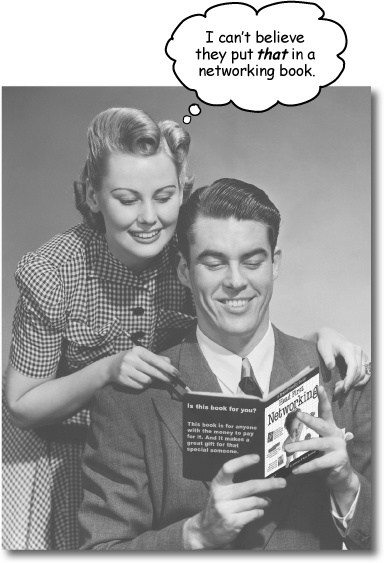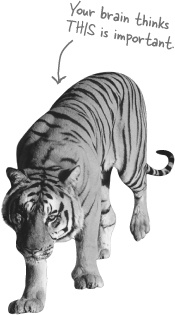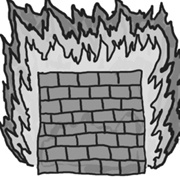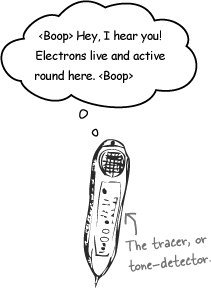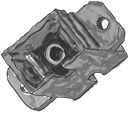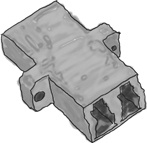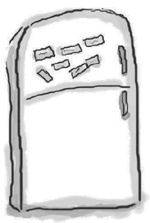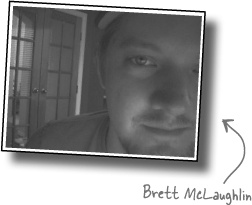If you can answer “yes” to all of these:
Do you need to learn networking for a job, for a class (like CCNA), or just because you think it’s about time you learned the difference between a switch and a router?
Do you want to learn, understand, and remember how to run an industrial-strength packet sniffer, set up a Domain Name System server, build firewall packet filters, and configure routing protocols like EIGRP?
Do you prefer stimulating dinner party conversation to dry, dull, academic lectures?
this book is for you.
If you can answer “yes” to any of these:
Are you completely new to computers?
Are you a CCNA or CCNP looking for a reference book?
Are you afraid to try something different? Would you rather have a root canal than mix stripes with plaid? Do you believe that a technical book can’t be serious if it anthropomorphizes multimeters and oscilloscopes?
this book is not for you.
“How can this be a serious networking book?”
“What’s with all the graphics?”
“Can I actually learn it this way?”
Your brain craves novelty. It’s always searching, scanning, waiting for something unusual. It was built that way, and it helps you stay alive.
So what does your brain do with all the routine, ordinary, normal things you encounter? Everything it can to stop them from interfering with the brain’s real job—recording things that matter. It doesn’t bother saving the boring things; they never make it past the “this is obviously not important” filter.
How does your brain know what’s important? Suppose you’re out for a day hike and a tiger jumps in front of you, what happens inside your head and body?
Neurons fire. Emotions crank up. Chemicals surge.
And that’s how your brain knows...
This must be important! Don’t forget it!
But imagine you’re at home, or in a library. It’s a safe, warm, tiger-free zone. You’re studying. Getting ready for an exam. Or trying to learn some tough technical topic your boss thinks will take a week, ten days at the most.
Just one problem. Your brain’s trying to do you a big favor. It’s trying to make sure that this obviously non-important content doesn’t clutter up scarce resources. Resources that are better spent storing the really big things. Like tigers. Like the danger of fire. Like how you should never have posted those “party” photos on your Facebook page. And there’s no simple way to tell your brain, “Hey brain, thank you very much, but no matter how dull this book is, and how little I’m registering on the emotional Richter scale right now, I really do want you to keep this stuff around.”
If you really want to learn, and you want to learn more quickly and more deeply, pay attention to how you pay attention. Think about how you think. Learn how you learn.
Most of us did not take courses on metacognition or learning theory when we were growing up. We were expected to learn, but rarely taught to learn.
But we assume that if you’re holding this book, you really want to learn networking. And you probably don’t want to spend a lot of time. If you want to use what you read in this book, you need to remember what you read. And for that, you’ve got to understand it. To get the most from this book, or any book or learning experience, take responsibility for your brain. Your brain on this content.
The trick is to get your brain to see the new material you’re learning as Really Important. Crucial to your well-being. As important as a tiger. Otherwise, you’re in for a constant battle, with your brain doing its best to keep the new content from sticking.
So just how DO you get your brain to treat networking like it was a hungry tiger?
There’s the slow, tedious way, or the faster, more effective way. The slow way is about sheer repetition. You obviously know that you are able to learn and remember even the dullest of topics if you keep pounding the same thing into your brain. With enough repetition, your brain says, “This doesn’t feel important to him, but he keeps looking at the same thing over and over and over, so I suppose it must be.”
The faster way is to do anything that increases brain activity, especially different types of brain activity. The things on the previous page are a big part of the solution, and they’re all things that have been proven to help your brain work in your favor. For example, studies show that putting words within the pictures they describe (as opposed to somewhere else in the page, like a caption or in the body text) causes your brain to try to makes sense of how the words and picture relate, and this causes more neurons to fire. More neurons firing = more chances for your brain to get that this is something worth paying attention to, and possibly recording.
A conversational style helps because people tend to pay more attention when they perceive that they’re in a conversation, since they’re expected to follow along and hold up their end. The amazing thing is, your brain doesn’t necessarily care that the “conversation” is between you and a book! On the other hand, if the writing style is formal and dry, your brain perceives it the same way you experience being lectured to while sitting in a roomful of passive attendees. No need to stay awake.
But pictures and conversational style are just the beginning...
We used pictures, because your brain is tuned for visuals, not text. As far as your brain’s concerned, a picture really is worth a thousand words. And when text and pictures work together, we embedded the text in the pictures because your brain works more effectively when the text is within the thing the text refers to, as opposed to in a caption or buried in the text somewhere.
We used redundancy, saying the same thing in different ways and with different media types, and multiple senses, to increase the chance that the content gets coded into more than one area of your brain.
We used concepts and pictures in unexpected ways because your brain is tuned for novelty, and we used pictures and ideas with at least some emotional content, because your brain is tuned to pay attention to the biochemistry of emotions. That which causes you to feel something is more likely to be remembered, even if that feeling is nothing more than a little humor, surprise, or interest.
We used a personalized, conversational style, because your brain is tuned to pay more attention when it believes you’re in a conversation than if it thinks you’re passively listening to a presentation. Your brain does this even when you’re reading.
We included more than 80 activities, because your brain is tuned to learn and remember more when you do things than when you read about things. And we made the exercises challenging-yet-do-able, because that’s what most people prefer.
We used multiple learning styles, because you might prefer step-by-step procedures, while someone else wants to understand the big picture first, and someone else just wants to see an example. But regardless of your own learning preference, everyone benefits from seeing the same content represented in multiple ways.
We include content for both sides of your brain, because the more of your brain you engage, the more likely you are to learn and remember, and the longer you can stay focused. Since working one side of the brain often means giving the other side a chance to rest, you can be more productive at learning for a longer period of time.
And we included stories and exercises that present more than one point of view, because your brain is tuned to learn more deeply when it’s forced to make evaluations and judgments.
We included challenges, with exercises, and by asking questions that don’t always have a straight answer, because your brain is tuned to learn and remember when it has to work at something. Think about it—you can’t get your body in shape just by watching people at the gym. But we did our best to make sure that when you’re working hard, it’s on the right things. That you’re not spending one extra dendrite processing a hard-to-understand example, or parsing difficult, jargon-laden, or overly terse text.
We used people. In stories, examples, pictures, etc., because, well, because you’re a person. And your brain pays more attention to people than it does to things.
So, we did our part. The rest is up to you. These tips are a starting point; listen to your brain and figure out what works for you and what doesn’t. Try new things.
Slow down. The more you understand, the less you have to memorize.
Don’t just read. Stop and think. When the book asks you a question, don’t just skip to the answer. Imagine that someone really is asking the question. The more deeply you force your brain to think, the better chance you have of learning and remembering.
Do the exercises. Write your own notes.
We put them in, but if we did them for you, that would be like having someone else do your workouts for you. And don’t just look at the exercises. Use a pencil. There’s plenty of evidence that physical activity while learning can increase the learning.
Read the “There are No Dumb Questions”
That means all of them. They’re not optional sidebars, they’re part of the core content! Don’t skip them.
Make this the last thing you read before bed. Or at least the last challenging thing.
Part of the learning (especially the transfer to long-term memory) happens after you put the book down. Your brain needs time on its own, to do more processing. If you put in something new during that processing time, some of what you just learned will be lost.
Talk about it. Out loud.
Speaking activates a different part of the brain. If you’re trying to understand something, or increase your chance of remembering it later, say it out loud. Better still, try to explain it out loud to someone else. You’ll learn more quickly, and you might uncover ideas you hadn’t known were there when you were reading about it.
Drink water. Lots of it.
Your brain works best in a nice bath of fluid. Dehydration (which can happen before you ever feel thirsty) decreases cognitive function.
Listen to your brain.
Pay attention to whether your brain is getting overloaded. If you find yourself starting to skim the surface or forget what you just read, it’s time for a break. Once you go past a certain point, you won’t learn faster by trying to shove more in, and you might even hurt the process.
Feel something.
Your brain needs to know that this matters. Get involved with the stories. Make up your own captions for the photos. Groaning over a bad joke is still better than feeling nothing at all.
Get your hands dirty!
There’s only one way to learn to network: get your hands dirty. And that’s what you’re going to do throughout this book. Networking is a skill, and the only way to get good at it is to practice. We’re going to give you a lot of practice: every chapter has exercises that pose a problem for you to solve. Don’t just skip over them—a lot of the learning happens when you solve the exercises. We included a solution to each exercise—don’t be afraid to peek at the solution if you get stuck! (It’s easy to get snagged on something small.) But try to solve the problem before you look at the solution. And definitely get it working before you move on to the next part of the book.
This is a learning experience, not a reference book. We deliberately stripped out everything that might get in the way of learning whatever it is we’re working on at that point in the book. And the first time through, you need to begin at the beginning, because the book makes assumptions about what you’ve already seen and learned.
We begin by teaching basic concepts like cabling and physical layout, then we move on to signals and hardware, and then onto stuff like wireless networking, security, and network design.
While it’s important to create well-designed networks, before you can, you need to understand the basic components and concepts of networking. So we begin by having you physically layout simple networks and work with network cables. Then, a bit later in the book, we show you good network design practices. By then you’ll have a solid grasp of the basic information and can focus on the advanced aspects of network design.
We don’t cover every networking technology on the planet.
While we could have put every single networking technology in this book, we thought you’d prefer to have a reasonably liftable book that would teach you the networking technologies that will get you up and running. We give you the ones you need to know, the ones you’ll use 95 percent of the time. And when you’re done with this book, you’ll have the confidence to go research that hot new technology and implement on your kickass network.
We intentionally cover things differently than the other networking books out there.
Trust us. We’ve read a lot of networking books. We decided to write a book that our students could use, a practical book that didn’t start out with the OSI layer model. We like it when our students stay awake in class. We also cover stuff we couldn’t find in other books: all that structural stuff that keeps your cables neat and out of sight; how signals get encoded into binary, hex, and ascii; and how reading blueprints can help you lay out your network.
The activities are NOT optional.
The exercises and activities are not add-ons; they’re part of the core content of the book. Some of them are to help with memory, some are for understanding, and some will help you apply what you’ve learned. Don’t skip the exercises. The crossword puzzles are the only thing you don’t have to do, but they’re good for giving your brain a chance to think about the words and terms you’ve been learning in a different context.
The redundancy is intentional and important.
One distinct difference in a Head First book is that we want you to really get it. And we want you to finish the book remembering what you’ve learned. Most reference books don’t have retention and recall as a goal, but this book is about learning, so you’ll see some of the same concepts come up more than once.
The book doesn’t end here.
We love it when you can find fun and useful extra stuff on book companion sites. You’ll find extra stuff on networking at the following two urls:
http://www.headfirstlabs.com/books/hfnw/
The Brain Power exercises don’t have answers.
For some of them, there is no right answer, and for others, part of the learning experience of the Brain Power activities is for you to decide if and when your answers are right. In some of the Brain Power exercises, you will find hints to point you in the right direction.
Technical Reviewers:
Johnathan Moore has ten years of experience as a network technical consultant and contractor. He owns Forerunner Design, a Web design and development business located in Wenatchee Washington.
Tim Olson teaches computer engineering and physics at Salish Kootenai College and is on the science team for the NASA Mars Science Laboratory mission. He enjoys skiing and horseback riding with his family in the mountains of western Montana.
Rohn Wood lives and works in Montana trying to bring high performance computing to the old West. A full time employee of the University of Montana and half-time employee of the University of Washington, he makes his living off his UNIX chops and works remotely from his home in the Bitterroot Mountains with a view down into the valley a few miles from Travelers Rest where Lewis and Clark laid over with Corps of Discovery two hundred years ago. An 18 year user of Linux and a veteran of RS232 Gandalf Boxes, ThinNET, and Token Ring, Rohn appreciates the need for learning the hard way and RTFM.
Our editor:
Thanks to our editor, Brett McLaughlin, who dove into this project when he had a massive load of other things to do. Brett helped us by putting our ideas on trial, opening our eyes to things we didn’t see, and pushing us to produce the best book we possibly could. Brett, you are a juggernaut of production! Ryan would especially like to mention that his sessions with Brett and Al kept him going during a difficult life transition. Thanks, guys!
The O’Reilly Team:
Thanks to Dawn Griffiths for the excellent and magical work she did to shape this book up and make it look beautiful.
Thanks to Catherine Nolan for taking a chance on two “fliers” from Montana.
Thanks to Laurie Petrycki for gambling on us and welcoming us to Boston and O’Reilly Media as if we were long-lost family.
Thanks also to the Head First folks we met in Boston, especially our brothers and sisters-in-arms: David Griffiths, Dawn Griffiths, Lynn Beighley, Cary Collett and Louise Barr. Thanks to Karen Shaner, Brittany Smith, and Caitrin McCullough.
We will never forget the day we discovered the Head First series at the bookstore. Thanks to Kathy Sierra and Bert Bates for lighting up the neurons of geeks everywhere.
Thanks to Tim O’Reilly for his vision in creating the best geek press ever!
Al’s Friends and Family:
Without Emily, my wife, I would have not been able to write this book. She took care of business while I hunkered down in the den all those countless weekends and evenings. I love you honey! Without Ella and Austin’s patience with their dad, this would have been a much harder project to accomplish. I love you guys too! Finally, my faithful dog CC, she was always with me in the den, sleeping of course.
Ryan’s Friends and Family:
Thank you to my daughter, Josefina, and my son, Vincenzo, who love books as much as I do. Thanks to my sweetie, Shonna Sims, who believed in me just when I was about to give up on this book. Thanks also to my Mom and Pops, my brother Jeff, my nieces Claire and Quinn, Dr. Tracee Jamison, Yumi Hooks, Dr. Giuseppi Onello, Curtis Cladouhos, Garret Jaros, Henrietta Goodman, and Dr. Paul Hansen (without whom I never would have gotten into technology in the first place). A huge thanks to my co-author, Al, about whom people often ask, “Is that your brother?” In many ways, he is.
A Special Thank You from Al and Ryan:
Thanks to the IT students of Salish Kootenai College, without whom we would never have been inspired to write this book in the first place.
When you see a Safari® icon on the cover of your favorite technology book that means the book is available online through the O’Reilly Network Safari Bookshelf.
Safari offers a solution that’s better than e-books. It’s a virtual library that lets you easily search thousands of top tech books, cut and paste code samples, download chapters, and find quick answers when you need the most accurate, current information. Try it for free at http://my.safaribooksonline.com/?portal=oreilly.
Get Head First Networking now with the O’Reilly learning platform.
O’Reilly members experience books, live events, courses curated by job role, and more from O’Reilly and nearly 200 top publishers.
